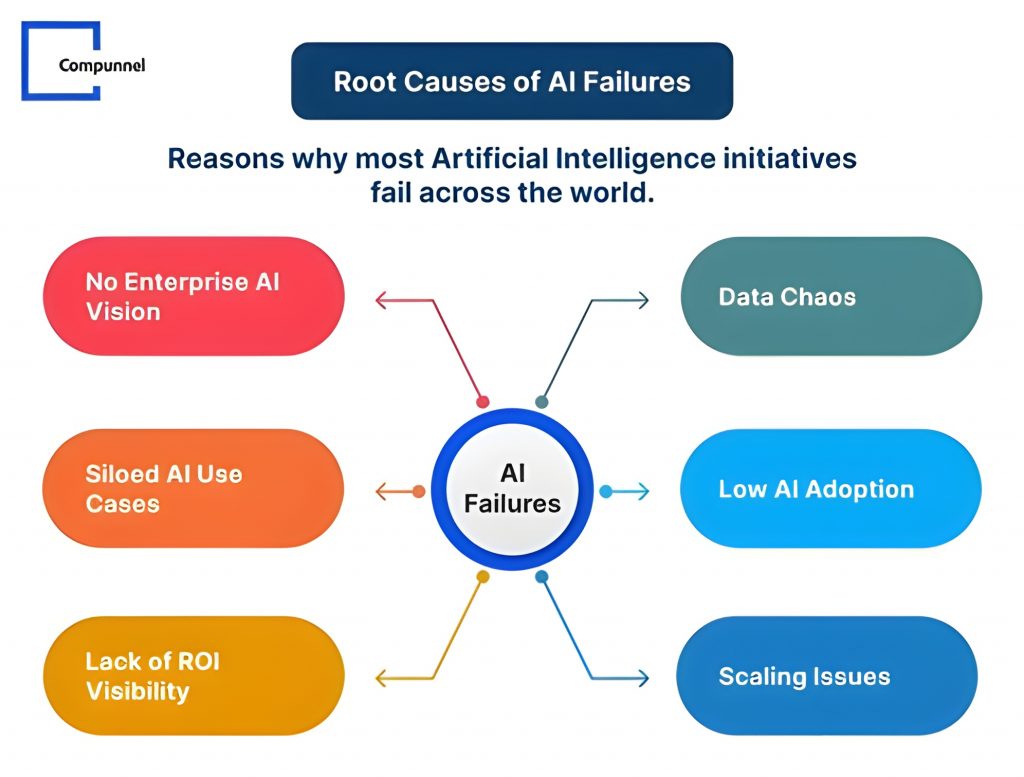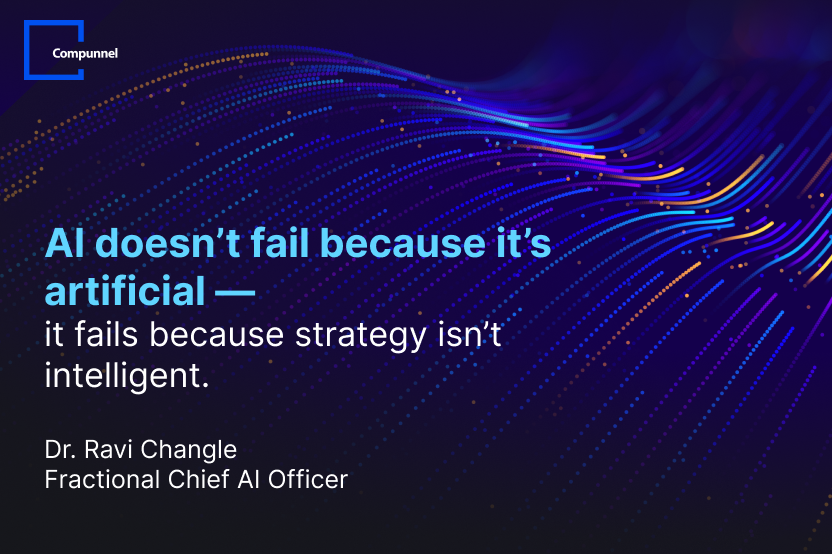How EOR Simplifies Remote Team Compliance in 2025
Introduction: Compliance at the Crossroads of Global Work Remote work has gone from a temporary fix to a long-term strategy.…
Artificial Intelligence (AI) has progressed from being experimental technology to being a boardroom priority. Still, with huge investments, the rate of AI failure is stunningly high.
A study by Gartner reveals that as many as 85% of AI initiatives do not meet their promised goals. Further, in a 2024 report by IDC, it was established that only 25% of AI projects make it to production, while the remainder gets stuck in pilot state. This increasing frequency of AI failure statistics isn’t bad technology – it’s a broken strategy.
This creates a critical question for CEOs and CXOs to ponder: Is AI dying on its own within your company before it ever really gets a chance to succeed?
The world is facing the situation where AI projects tend to get stuck in pilot stages, resulting in escalating expenses, reduced ROI, and compromised competitive positioning.
Furthermore, conventional financial ROI measures are inadequate when measuring AI investments. Unlike traditional projects, the Return on AI investment (RoAI) needs to capture more strategic values like enhanced decision-making, customer experience, innovation capability, and competitive agility. Organizations tend to neglect to measure these intangible values, which results in perceived underperformance and early cancellation of promising AI initiatives.

Most artificial intelligence failures are not caused by technical issues or artificial intelligence mistakes, contrary to what people think. The actual problem is the way organizations tackle AI:
The usual situation:
This results in a vicious AI environment where the success rate of AI is horrifically low across sectors.

Treating AI as a stand-alone IT project is one of the largest contributors AI fails. Without an integrated AI strategy grounded in business goals, the prevalence of AI failure statistics only increases over time.
Accenture’s latest research indicates that firms with the greatest AI maturity realize up to 50% higher revenue growth and 30% better operational efficiency. But only a limited number make it to this top level.
This is precisely where Compunnel’s Chief AI Officer as a Service (CAIOaaS) shifts the landscape for business executives.
CAIOaaS is programmed to address each cause of artificial intelligence failures in its tracks — by infusing executive-level AI leadership directly within your organization.
| Failure Factor | CAIOaaS Solution |
| No Enterprise AI Vision | Customized AI Roadmap aligned to business goals |
| Siloed AI Use Cases | Unified governance across departments |
| Lack of ROI Visibility | KPI-driven AI Performance & ROI Framework |
| Data Chaos | End-to-end Data Readiness & Strategy |
| Low AI Adoption | AI Literacy & Cultural Change Programs |
| Scaling Issues | Operational AI Integration at every touchpoint |
| Ethical & Regulatory Risks | Responsible AI Governance Framework |
As a C-level executive, you can no longer afford to think of AI as an experiment. The rate of AI fails in business is a cold, hard truth—but it doesn’t have to be yours.
With Compunnel’s CAIOaaS, AI is a business asset — not a business risk. It turns disparate, risky initiatives into a strategic, scalable advantage.
